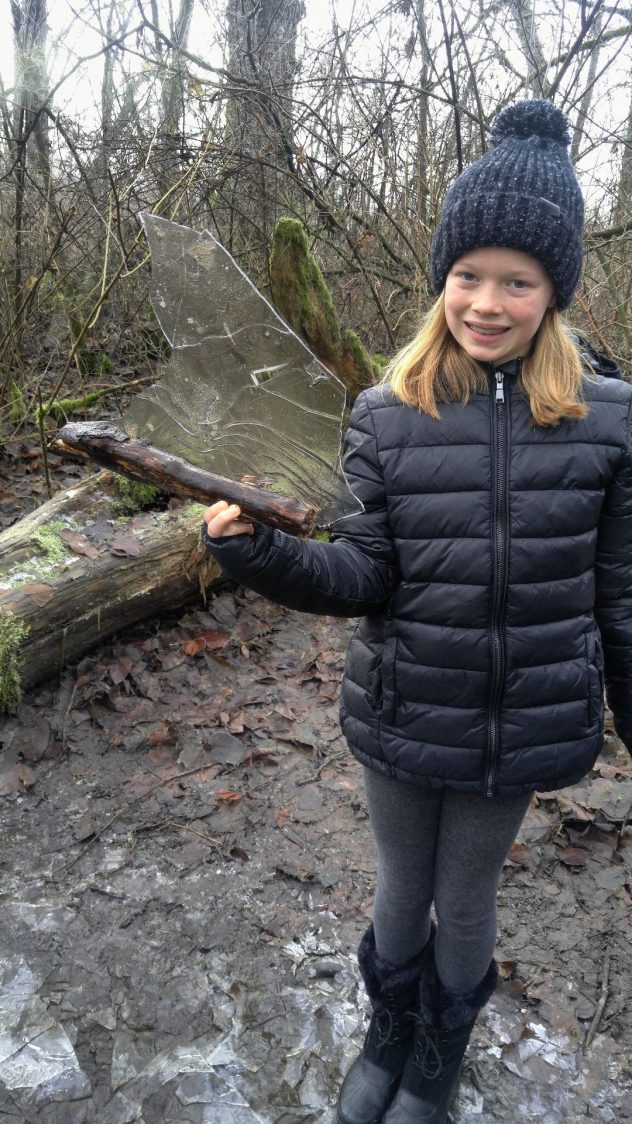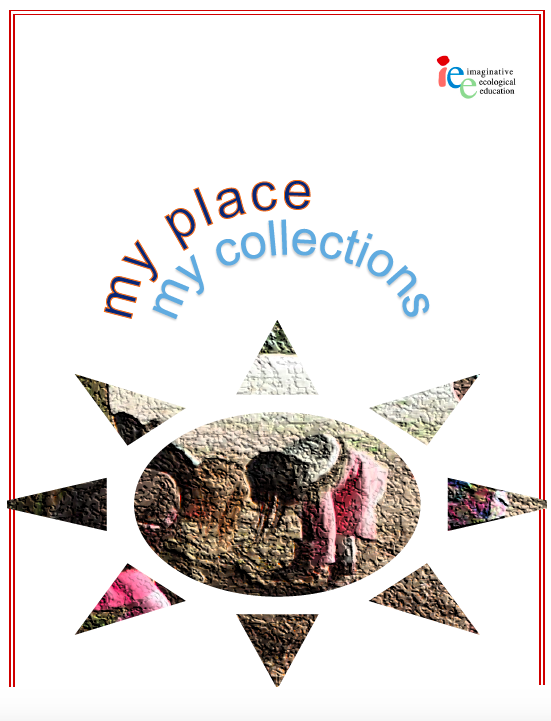“Don’t worry, they aren’t hoarders.”
How’s that for a catchy title?
I published a post in 2017 reassuring readers that their children’s/students’ seeming obsession with collecting things should not cause alarm. Indeed, an interest in collecting is completely normal. No need for an intervention! The post outlined the imaginative interest that children (and adults) often have in collecting things. It also suggested that this cognitive tool is powerful and should be engaged in teaching. Learn about how collections and hobbies are a cognitive tool of the imagination here. (This post is one in the Tools of Imagination Series.)
In this post I share a free resource (download below) that can tap into your students’ interest in collecting as they learn about their local Place and community. It is a kind of “field guide” students can use at any time but it is particularly powerful if used in conjunction with the Walking Curriculum. (See below “Maximize The Impact”). One teacher I spoke to who has been using the Walking Curriculum for some time said that the My Place, My Collections “Book of Lists” is a powerful way for students to document their learning. She also commented that it helps students to identify the changes they notice in the world around them. (Get the resource as an ebook or paperback here.)
Click here to download the resource:
 Loading...
Loading...
Maximize The Impact
 Whether you are a teacher or a parent, I urge you to use this resource in conjunction with the Walking Curriculum. Students can use the booklet as a kind of “field journal” to document their discoveries over time as they engage in the walking-focused Place-Based activities. It is designed to tap into your students’/kids’ sense of wonder about the world and engage with their interest in collecting and organizing information.
Whether you are a teacher or a parent, I urge you to use this resource in conjunction with the Walking Curriculum. Students can use the booklet as a kind of “field journal” to document their discoveries over time as they engage in the walking-focused Place-Based activities. It is designed to tap into your students’/kids’ sense of wonder about the world and engage with their interest in collecting and organizing information.
This My Place, My Collections “Book of Lists” can also be used to fulfill learning outcomes/aims across the curriculum. For example, in Social Studies, students’ findings can deepen their understanding of physical, geographical, historical and cultural characteristics of their community. In Science the information students have collected in relation to local trees/birds/rodents etc. can support the study of different life forms or habitats. Students’ “favorite” lists can serve as a basis for different oral or written language activities and, thus, fulfill various learning objectives in Language Arts. Their digital photographs can be used for personal Power Point or “Prezzie” type presentations of their favorite local findings. Students can be encouraged to classify the information they collect in different ways that encourage critical and analytical thinking skills. For example, students can divide/organize/arrange the information in their lists based on different characteristics or could transform their lists, based on their classification schemes, into formats that include tables, charts, graphs, or time-lines. They might integrate categories using VENN diagrams. They might spatially represent different phenomena using maps (maps that they design or that you provide). Students can be encouraged to deepen their understanding of list topics by learning specific terminology and applying it to their lists.
To maximize the pedagogical value of this resource and to enhance the impact it can have on students’ sense of Place, you should provide students with opportunities in school to investigate as many topics as possible.
To collect information students can, for example,:
- participate in any/all of the 60 walking-focused activities in the Walking Curriculum;
- design and use surveys that ask people in the local community questions;
- investigate the history of different Place or family names in the community;
- engage in “photography scavenger hunts” where visual images of different topics are discovered and saved.
The My Place, My Collections book can also be something students are encouraged to use outside of school; they can expand their investigations during time spent with family and friends. Use this book within a learning program that affords students opportunities for emotional engagement with the local natural world. (This is Imaginative Ecological Education!)
While deepening students’ knowledge of Place through this kind of research can contribute to their Sense of Place, the development of feeling for Place may require a different kind or kinds of engagement. (e.g. On its own, writing lists isn’t going to connect kids with nature!) If this book is to support the aims of IEE in developing ecological understanding, then, it is important that students have ongoing opportunities throughout the curriculum to emotionally engage with Place and reflect on the knowledge they are gaining.
For ideas about how to connect students emotionally with Place in ways that can support students’ sense of involvement in the living world please see www.ierg.ca/iee and principles/activities described there for Activeness and Place/Sense of Place. There are more resources available on here.
What do you think? Please leave a comment!


See, this is just flat-out wonderful. The problem we all, as teachers, struggle with is helping get kids “through the crust” — past the “eh, what do I do with this?” response that so many kids have, and into the thick wonderful rich intellectual DELICIOUSNESS that every natural phenomenon holds.
What an easy way to help them do it.
I’ll be experimenting with this, particularly for my own kids! Thanks.
Thanks Brandon! Keep me posted about your walking adventures!
Lovely. I am interested in the applications one might develop for elders with these themes. Walking, collecting, categorizing, extending…and sharing knowledge about place through elders. Or, having these themes enphasized for adult education activities in terms of cross cultural explorations of place.
HI Patty,
There are so many possibilities. The next book will be about how a Walking Curriculum (getting outside classroom) can be applied in Higher Education contexts. This book could easily be used with parents for family outings and, with some modifications, many walks with elders. I would love to hear about what you do with the activities!
Best wishes,
Gillian